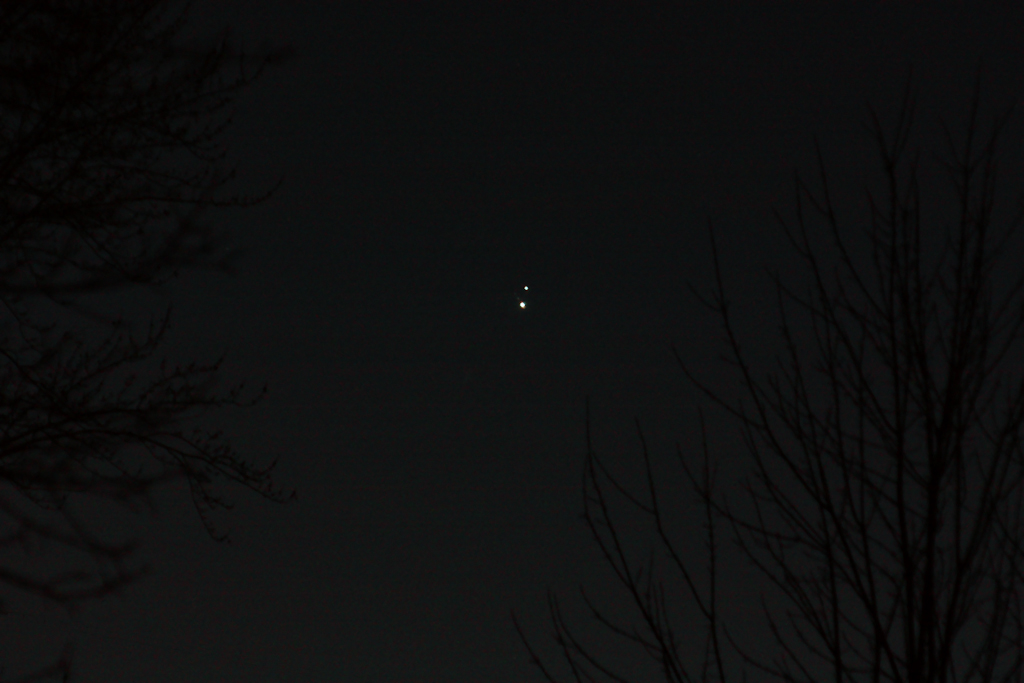
Telescope: Orion AstroView 90 EQ @ f/10
Camera: Canon 450D (Rebel XSi, stock)
Filter: None
Planets: 16×1/100sec, ISO 400 saved as RAW
Moons: 16×1/25sec, ISO 400 saved as RAW
Darks: Internal (Long Exposure Noise Reduction On)
Software: Registax, Nebulosity, Photoshop
This image was taken on the evening of December 22nd, about 24 hours after the closest approach of Jupiter and Saturn while they were about 1/5th of a degree apart. The source images were taken by first setting the focus on Vega using a Bahtinov mask. Next, the images of the conjunction were taken using a remote switch and the camera’s mirror lock-up function, pausing about 5 seconds to allow vibrations to settle. Two sets of 8 images each were taken with the field being reset between each set. The source images with then converted to TIFFs, roughly aligned and cropped in Photoshop, and then aligned and sharpened in Registax. Photoshop was used to combine the images of the planets with the images of the moons. The final composite image was cropped, scaled, and color balanced in Nebulosity. It was worth the effort getting a picture, but nothing beats how beautiful the real thing was! Before the pair sank below my local trees I was sure to pull the camera off of the scope and to spend a few minutes just enjoying the view. Wonderful!











Recent Comments